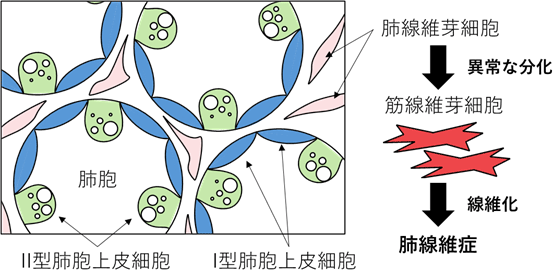自分も老齢に差し掛かっていて、筋力、体力、知力、気力の全てが衰えてきたと感じます。体に力が漲る感じが無くなってきたわけです。すると、死に近づいたという感覚が生じてきました。10代、20代のときには絶対に想像もできなかった感覚です。若い時は、死ぬのは苦しいんだろうか、苦しみたくないなと思っていました。しかし人生折り返して地点を過ぎて、生まれたときよりも死ぬときのほうが近いというところまでくると、体がこうして弱っていくことが実は楽に死ぬための最善のやり方なのではないかと思うようになりました。若いときに死ぬのは苦しみを伴いますが、十分年を取ってからなら実は生から死へ移り変わるのは滑らかにつながっているのではないかと思えるのです。連続かつ微分可能な滑らかさです。
自分の父は90歳のときに大腸がんが見つかり、大腸癌がわかってから3か月で亡くなりましたが、亡くなる前日まで家族と会話ができていて、苦しいと感じる時間は少なかったのではないかと思います。亡くなる1週間前の時点まで在宅で体を起こすこともできなくなったため入院しましたが、延命措置は全て断り、栄養点滴もせず、ときおり水かお茶を口にするだけでした。直接の原因はもちろん大腸癌と転移したがんです。もしがんになっていなければ100歳まで生きられてたのじゃないかと思うくらいに、元気なほうでした。しかしがんがわかってから急速に体が衰えて、結果的になくなるときは老衰とさほど変わらなかったんじゃないかという気がしています。
下の記事で取り上げられている例に自分の父親のケースも近いような気がしました。
- たとえ死亡診断書には「虚血性心疾患」「大腸がん」などと記されていたとしても、老衰死でもある場合が圧倒的です。
- ミズノさん、徐々に病気が進行し、眠っている時間が増えていきました。ご飯も食べられなくなりましたが、経管栄養も点滴もしませんでした。
- 「苦しいのは嫌だから、延命なんてしないでおくれ」と口ぐせのようによく言っていました。
- 飲まず食わず、点滴もせずで、ミズノさんは自然なまま、それから10日間生きました。食べたり飲んだりできなくなったら、「もつのは長くて10日間くらい」と言う先生もいますので、ミズノさんはぎりぎりまで頑張ったと言っていいでしょう。
- 点滴をしていたら、痰が増えて苦しんだことでしょう。穏やかな表情ですごせなかったのは間違いありません。
1000人の看取りに接した看護師が教える「老衰が理想的な死」と言える訳【書籍オンライン編集部セレクション】 後閑愛実 2023.11.13 4:04 https://diamond.jp/articles/-/331724
【大事なんで、何度でも修正再投稿】
内科医です。
患者(特に高齢者)が食事を口から取れなくなって回復の見込みがなくなった時、点滴を希望する家族は多い。
でも、「点滴」って本来は「回復し得る人のため」のもの。…
— KAITO (@teteatete2021) September 7, 2024
老衰死とは
下の論文でも、高齢者の場合は、たとえ病気が原因であっても老衰死と同じように自然な死を迎えることが多いということが説明されていました。
- 身体と精神ともに衰退し、無理のない状態で生きていくこと。その結果、「スーっと違和感なく」最期を迎えられることが、Cさんの言う「老衰死は究極な自然」なのである。
- 高齢者の人って、がんであっても大きな症状がなく、コントロールできていれば本当に自然で。自然に亡くなっていく。だんだん食事がとれなくなってというところでは(老衰死と変わりない)。本当に苦しまずに亡くなられたケースはいろいろ体験しました。老衰だからというところの違いは、そんなに違わないのかなという気がする。がん自体も老化現象でもあるわけですし。
老衰死という現象 前原, なおみ 大阪大学, 2018, 博士論文 https://ir.library.osaka-u.ac.jp/repo/ouka/all/69706/29949_Dissertation.pdf
若くしてがんになられた方は、抗がん剤治療などでがんと闘い、非常に苦しい思いをします。それに対して、高齢でがんになった場合には、治療をしないという選択もあるのかもしれません。がんを取り除くための外科手術を受けて、がんは無事に取り除けたが、外科手術の負担が大きすぎてそれに耐えられなくて亡くなったというケースもニュースなどで見たことがあります。西洋医学は病巣部に対する治療にフォーカスしがちですが、その人の人生にとって何がベストなのかを考えると、違ったオプションもあるのかもしれません。
死亡診断書における老衰死
- 2018年人口動態統計月報年計(概数)によると、老衰による死亡数が脳血管疾患による死亡数を上回り死因の第3位になった。日本人の3大死因は悪性新生物(腫瘍)・心血管疾患・老衰
- テロメアの短縮やミトコンドリアの劣化など細胞レベルの老化と個体レベルの老化の関係性も充分に明らかではない
- 厚労省の2019年度版死亡診断書(死体検案書)記入マニュアルでは「老衰」について、「死因としての『老衰』は、高齢者で他に記載すべき死亡の原因がない、いわゆる自然死の場合のみ用いる」と記載している。さらに「ただし、老衰から他の病態を併発して死亡した場合は、医学的因果関係に従って記入することになる」とある。
- 江崎らは100歳以上の長寿者(百寿者)の病理解剖を検討した(江崎行芳, 他:「百寿者」の死因 病理解剖の立場から. 日本老年医学会雑誌. 1999; 36(2):116-21)。解剖した42例すべてに死因として妥当な病気が見つかったという。敗血症16例、肺炎14例、窒息4例、心不全4例などだ。超高齢者では、①免疫機能の低下、②嚥下・喀出機能の低下―が致死的な病態と結びつきやすい。
- 明らかに老衰と思われる死亡でも、医師によっては肺炎や心不全と書くことがよくある
- 大学病院に勤務の医師のなかには「老衰」と書かないことを信条としている人もいる。人が死ぬ=必ず原因や病気があるはず、という思考
- 「点滴を絞ったから亡くなった」という書き方で報じるメディア
- 最期まで口から食べて、誤嚥性肺炎を併発して亡くなった場合 自宅で亡くなれば美談 介護施設だと家族が「食べさせたから亡くなった」という理由で施設を訴えることがある
- 高齢者の人工透析非導入や終末期の透析中止を、あたかも殺人や安楽死であるかのように報じるメディア
公開日: 2019.07.23 / 更新日: 2023.08.23 スペシャルコラム 日本人の死因第3位になった「老衰」の定義は意外に難しい https://doctor.mynavi.jp/column/rousui/
- 現在の日本人の死因1位「癌」、2位「心臓疾患」3位「老衰」
- 「死因は究明すれば必ずあるはずであるが、とりあえず便宜上、老衰としておこう」
- 無理して治療するよりも自然な死を受け入れようと考える人が増えてきた
第44回 老衰死について 公開日:2021年5月14日 09時00分 更新日:2023年8月21日 11時59分 井口 昭久(いぐち あきひさ) 愛知淑徳大学健康医療科学部教授 https://www.tyojyu.or.jp/net/essay/oiomirumanazashi/rosuishinitsuite.html
老衰死という選択
「医療が発展してしまったために、死ぬ時期を逃している」
看護師にとって老衰死とはどのようなものか ─応援という関わり─ 看護師 F さんの語りより 前原 なおみ* 京都看護 第 4 号 https://kyotokango.repo.nii.ac.jp/record/11/files/京都看護第4号_03_前原なおみ%20様(研究報告).pdf
老衰真の現実
老衰死は死ぬまでがたいへんなのです。それまで元気でいて急に衰えるわけではなく、死のかなり前から全身が衰え、不如意と不自由と惨めさに、長い間、耐えたあとでようやく楽になれるのです。視力も聴力も衰えますから、見たり聴いたりの楽しみはなく、味覚も落ちますから美味しいものを食べてもわからず、それどころか食べたら誤嚥して激しくむせ、そのたびに誤嚥性肺炎の危険にさらされ、腰、膝、肘とあらゆる関節痛に耐え、寝たきりになって、下の世話はもちろん、清拭や陰部洗浄、口腔ケアなどを受け、心不全と筋力低下で身体は動かせず、呼吸も苦しく、言葉を発するのも無理というような状況にならないと、死ねないのが老衰死です。
2023.11.10 じつは「老衰死」は悲惨…医師たちが「死ぬなら、がん」と口を揃えて言う「意外なワケ」 久坂部 羊 https://gendai.media/articles/-/103607
上の記事を読むと、90歳でがんになり3か月も待たずに亡くなった自分の父親は、この記事に沿って解釈すれば一番いい死に方だったのかという思いも過りました。まあ90歳でも毎日、階段の上り下りができるくらいに健康だったので、ちょっと違うかもしれませんん。
